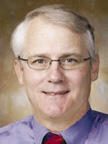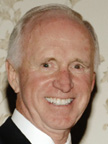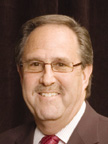RELATED CONTENT

NEW YORK--The optical retailing landscape has changed so much in the past 20 years it is almost unrecognizable from what it was two decades ago.
The emergence of new and often-consolidated superoptical chains, the entry of mass merchants and warehouse clubs into the eyewear marketplace, the growth of managed vision care, vertical integration the “eyewear as fashion accessory” movementÉall these factors and more have made selling eyewear a very different proposition from what it was in 1987.
The retail players are different, the products they sell are differentÉeven the way the eyewear customer is approached from a merchandising standpoint is a whole new ballgame. Today’s optical retail transaction--including a small but growing number of sales accomplished via the Internet--is not what it used to be.
New Retailers, Products
A major factor in the shifting retail landscape has been the emergence of eyewear chains as major players. Although this trend began in the early 1980s, it hit its stride in the later years of that decade and in the early 1990s, when national and regional chains proliferated rapidly. Though initially feared as sounding a potential death knell for independent opticians and retailers, chains have coexisted with strong independents ever since.
Ken Hollis, OD, president of Doctor’s Vision Center, sees the advent and growth of the eyewear chains as one of the industry’s most signficiant milestones.
 |
| Ken Hollis, OD |
The chains’ expansion, particularly LensCrafters with its intensive marketing of one-hour eyeglass service, “changed the entire paradigm relative to eyeglasses,” Hollis said, “primarily through access to the retail point with multiple locations and longer hours, speed of delivery and advertising--these changes helped to increase the size of the optical market.”
The optical chains have also been a strong factor in the emergence of the “fashion eyewear” concept, supporting designer brands and promoting the concept of multiple pairs for multiple looks. That concept, pioneered by savvy independents, remains a significant part of the eyewear retail mix today.
 |
| Dave Pierson |
“The whole ‘eyewear-as-fashion-accessory’ market has been well-served by the advent and expansion of the optical chains into malls, major department stores and high-profile shopping centers,” induDatry veteran Dave Pierson, president and chief executive officer of Refac Optical Group, said earlier this year. “As these locations proliferated, they helped develop the concept of eyewear as less a ‘destination’ and more an ‘impulse’ shopping category. The industry has also benefited from the chains’ increased emphasis on fashion, name brands and add-on lens options.”
 |
| Dart Messick |
Dart Messick, president of Kennedy & Perkins Guild Opticians, with five locations in Connecticut, sees the growth of the “fashion” approach as one of the most important trends in optical retailing in recent years. “There have always been a few large fashion houses involved with the optical business, but since the launch of Diane Von Furstenberg eyewear more than 20 years ago, the optical industry and especially the sunwear industry have exploded with the concept of eyeglasses and sunglasses as fashion accessories,” Messick told VM.
Advances in ophthalmic lenses have also played a role in the industry’s growth, he said: “New lens technologies such as improved progressives, and thinner high-index lenses, and lens treatments such as A/R and photochromics, have benefited both the consumer’s visual experience and the retail opticians’ bottom line.”
Hollis of Doctors Vision Center also sees enhancements in lens design and materials as a key factor in the changing retail landscape. As lens technology advances, “new product offerings have improved the performance of eyeglasses, meeting and exceeding customer needs--and increasing the size of the market in both units and dollars,” he commented.
Other optical retailers have found private-label product--both frames and lenses--a way to set themselves apart from their competition.
Not all retailers are willing to go as far as former D.O.C Optics president and chief executive officer Richard Golden, who established a chain of SEE eyewear boutiques offering private-label merchandise exclusively. But other retailers see a judicious helping of private-label eyewear as a way of adding to their branded inventory and offering customers exclusive--and higher-margin--merchandise.
 |
| Al Bernstein |
Arizona-based Nationwide Vision, for example, launched its first private-label collections--under the proprietary brand Richard Taylor Scottsdale--not quite two years ago, according to president Al Bernstein.
“It’s the first time we’ve tried private label, and it’s working quite well,” Bernstein said. “We hope to increase the private-label merchandise to about 15 percent of our inventory mix in both ophthalmic frames and sunwear.”
Value, Luxury Thrive
In the past 15 years or so, optical retailing saw a flurry of activity at both the high end and the low end of the pricing spectrum.
In the “value” segment, the entry of Wal-Mart into the optical business in the early 1990s, first as a host for leased visio